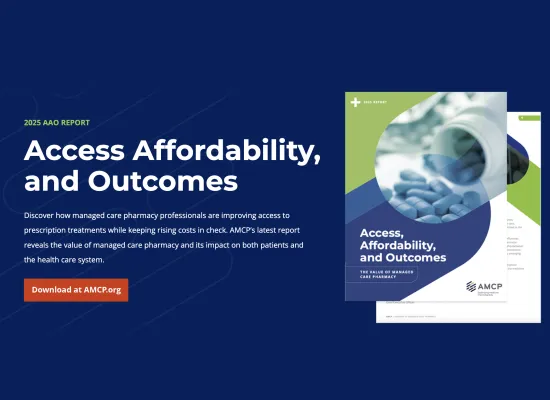
Opioid Prescribing in Georgia Medicaid Program: Potentially Inappropriate Practices are Increasing, According to Study in JMCP
Alexandria, Va., Sept. 10, 2018 — Potentially inappropriate prescribing practices for opioids in the Georgia Medicaid program are common and increasing despite policies aimed at reducing utilization, concludes a new study in the September issue of the Journal of Managed Care & Specialty Pharmacy (JMCP).
Indicators for inappropriate opioid prescribing have increased over time across all demographic groups, with the oldest age group in the studied population, ages 55-64, experiencing the largest increment in incident rates, the study finds. The study did not include people 65 years or older. Indicators include the average number of opioid prescriptions received per patient, average days supply of opioids per patient, and average daily dose of opioid per patient, according to the study in JMCP, the official journal of the Academy of Managed Care Pharmacy.
The researchers, who examined prescribing data from 2009 to 2014, found the percentage of Georgia Medicaid enrollees with at least one or more indicators of potential inappropriate prescriptions increased from 17.17 percent to 18.21 percent during that period.
“Given the high level of attention and scrutiny that has evolved in the United States associated with the prescribing of opioids, the finding that opioid utilization is continuing to increase in Georgia Medicaid enrollees is a concern,” the authors write.
The study acknowledges that the increase in the number of opioid prescriptions received by patients may stem in part from prescribers attempting to work around policies limiting the quantity of opioids dispensed per prescription. However, the overall results confirm an increase in the average days supply, which compounds the issue of increasing numbers of opioid prescriptions. Further, and perhaps most significant from a clinical perspective, the average daily dose of opioids also increased, the study adds.
“The implication of these trends — increased numbers of prescriptions, increased days supply, and increased daily dose — is that opioid use is increasing even with policy and societal pressure aimed at curbing marginal utilization,” the authors conclude.
The authors suggest it’s time to consider other ways to reduce undesirable utilization. Patient and provider education may help in the quest to reduce undesirable utilization.
For patients with chronic pain, management by a pain specialist or appropriate counseling may be advised, they note. In cases where de-prescribing is an option, it should be considered. At the minimum, more education for prescribers and dispensers regarding initiating opioid therapy and concomitant therapy should be engaged. In particular, pharmacists have been shown to effectively affect the de-prescribing of benzodiazepines.
“Pharmacists are the last checkpoint in the system, are easily accessible to patients, and may be able to play an important role in the de-prescribing of opioids as well,” the authors write.
Read the article at http://bit.ly/2NypjtS or the September 2018 issue of JMCP at www.jmcp.org.
About JMCP
The Journal of Managed Care & Specialty Pharmacy publishes peer-reviewed original research manuscripts, subject reviews, and other content intended to advance the use of the scientific method, including the interpretation of research findings in managed care pharmacy. It is dedicated to improving the quality of patient care by providing its readers with the results of scientific investigation and evaluation of clinical, health, service, and economic outcomes of pharmacy services and pharmaceutical interventions, including formulary management. www.jmcp.org.
Featured News & Resources
See Full CalendarAI Pre-Conference Program
AMCP Southwest Day of Education
Upcoming Events
AMCP offers a wide variety of educational opportunities, from events and webinars to online training.







